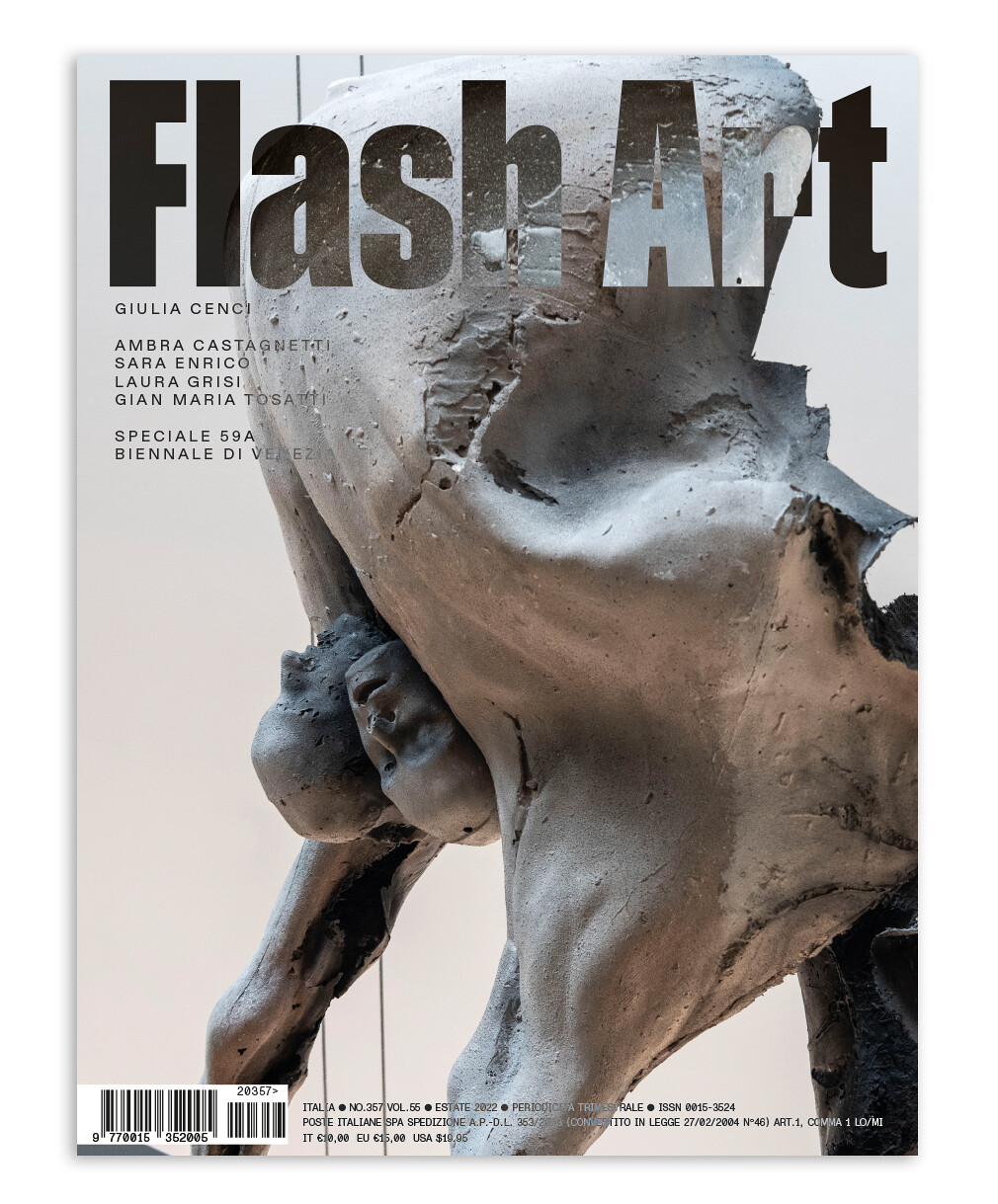In the course of his reflections on the 59th Venice Biennale, featured in this issue, Giovanni Aloi cites Giacometti’s disturbing walking sculptures, made around the middle of the twentieth century, as “the essence of an often-overlooked cultural breaking point.” According to Aloi, it was these sculptures that marked the end of humanism. But what’s interesting about this historical flashpoint is that this ending also heralded a new beginning: the era of the posthuman. Built on the ashes of colonialism and capitalism, this new paradigm would go on to re-present inevitable historical circularities.
Conceived as a tribute to “The Milk of Dreams,” this issue critically revisits productions we saw in and around the main exhibition and outside, in other projects presented for the occasion that question corporeal entities and rupture classical conceptions of the relationship between human/nature and machine. The posthuman cyborg, as Aloi reminds us, “is the manifestation of an evolutionary process that overcomes the classical conception of the natural and fluidly situates technology as the matrix of bodily and social reality.” The artists featured in this issue, each in their own way, critically address the meaning of being human in this delicate historical moment, confounding the categories and identities that underlie the systemic appropriation of nature, machine, and territory.
We invited Teresa Castro to reread Italian artist Laura Grisi’s multifaceted practice through the lens of ecofeminism. Castro notes how many of Grisi’s works, with their pioneering use of natural elements, reference some of the structuring issues that animated this heterogeneous movement. Moving away from the centrisms of art history, the author situates Grisi’s practice in an approach that aims to establish a new relationship to objects.
A relationship that presupposes the “more-than-human,” like that which Giulia Cenci—the subject of this summer’s cover story—addresses in her sculptural practice, with its roots in Cortona, in an old family barn with an animal smell that has not faded over time. The aerial structure that winds for a hundred and fifty meters through a Venetian calle, conceived by Cenci for the Biennale, suggests a macabre dance made discernible through the muscular contractions of humanoid-animal limbs. Another form of this relationship we see in the work of Ambra Castagnetti, who, as Vincenzo Di Rosa writes, “testifies to a radical interweaving between the lives of human beings and the earth, an indistinct and continuous flow of forces that blurs all boundaries and squeezes everything into one complex system.”
In the works and curatorial statements of this edition of the Biennale, the body as subject matter—its dreamlike dimension and evolutionary bearing—is hyper-present. In Sara Enrico’s sculptures, for example, which, in the words of Annalisa Pellino, “call for continuous repositioning, open to an expanded temporality that also invests the spectatorial body”; or again in “Human Brains: It Begins with an Idea” at the Fondazione Prada; in Pedro Neves Marques’s project for the Portugal Pavilion; and in Pauline Curnier Jardin’s permanent installation at the Giudecca House of Detention, all analyzed by Jacopo Miliani in relation the dualism of body and mind.
In contrast, at the Italian Pavilion there is a total reversal: the absence of the body. For this 20,000-meter space, Gian Maria Tosatti has conceived of an installation that metaphorically traces the rise and fall of the Italian industrial miracle—a performative, experiential manifestation of “inevitable historical circularities.”
Reviews: Steve McQueen Sunshine State Pirelli HangarBicocca, Milan / Elisabeth Hölzl, Gina Klaber Thusek Eliografie, incomplete Kunst Meran / Surrealismo e magia. La modernità incantata Peggy Guggenheim, Venice / Marlene Dumas open-end Palazzo Grassi, Venice / Penumbra Fondazione In Between Art Film, Complesso dell’Ospedaletto, Venice / Luigi Mainolfi Etna Galleria de’ Foscherari, Bologna / Amalia Pica Quasi Fondazione Memmo, Rome / Clément Cogitore Notturni Mattatoio, Rome; Ferdinandea, Museo Madre, Naples / A Matter of Life and Death Thomas Dane Gallery, Naples.
The issue will be available at Art Basel and at the 59th Venice Biennale.


